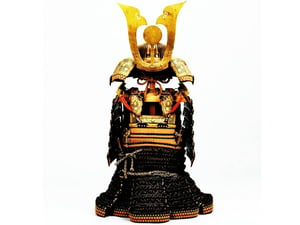Japanese Swords (刀剣) is a generic term for weapons equipped with blades or swords that are as long as or longer than a grip. In general, the sword refers to a double-edged one and the sword refers to a single-edged one, but there are things not limited to this. For details, refer to each item.
A sword is a type of weapon (sword), and in a sword it refers to a thing with a blade only on one side in particular, many of which have a warped structure to increase cutting power. Those not warped are particularly referred to as direct swords. As Japanese, it can be disassembled as “hard” and each piece represents a blade. For details on Japanese swords refer to the section on Japanese swords.
Although a sword is a tool for breaking targets, things made as weapons often have tips that allow piercing. In order to further increase the effect of the piercing, there are things having a blade (pseudo blade) made with a blade of more than half of the blade from the tip part of the sword, 鋩 (Kisasaki), and even in Japan, (Kireosaki Iroha) A sword of construction is seen. Kochimaru is the earliest one, but in later generations the sword which made this construction is rarely seen. However, it is better for a “thrust” to have a straight blade (sword), so if you stick to a thrust it will not work for “slashing”. Warpage is deep to cut things efficiently, whilst the longer blade length is suitable, for sharpening there is no warp and shorter blade length is suitable. For example, a spear which is a weapon to pierce has a standard of “giant spear” which is said to be long (tip part) is 1 scale (30 cm).
The sword is sharper than the Western sword, sometimes seen as a delicate weapon because Japanese swords or shamsils seems slim at first glance, but in fact it is structurally sharpened to sharpen the sharpness Since there is a limit to thickening the sword body in relation to the cutting edge angle unless it is not, the double-edged sword needs to widen the width to obtain strength. It is because the width of the sword is narrow because it can ensure strength to withstand practical use even to such a degree. In the Chinese region where both sword and sword existed in parallel, the sword was heavy and emphasized striking power, the sword was regarded as lightweight and emphasis on speed.
history
Due to the refinement of tough metal materials such as bronze and iron and development of processing technology, a sword with a long blade is born from a tool such as a knife or a bow, and a thin blade of a blade is made by further progress of metal processing technology Became.
It is said that the creation began on the basis of the direct sword transmitted from China in some parts, but in Japan also a direct sword made of bronze and iron was made from BC, these are different from the manufacturing method and are based on Japanese sword It can not be said. In Japan, since the Heian era, a sword called “Tachibana” with unique warpage started to be produced, which is a common weapon of warrior and is called Japanese sword after this era. Also, in the Asian countries, from the 11th century to the 13th century, a warped sword like Persian sham seals suitable for fighting on horse and Tarwar in India is born.
Types of main swords
In Japan, the meaning of double-edged or single-edged refers to the shape when making a cutting edge of a cutter, a knife with a single-sided tapered shape (obliquely dropped shape) is called a single-edged knife and a knife with a cutting edge made from both sides tapered A blade with both blades and blades with blades is referred to as a blade, but in this section both blades and one blades have a blade with a blade (and) and a back (also called a peak) as a blade, and a blade with both edges in the blade Both edges are attached with mainly linearly symmetrical shapes attached.
We will exhibit 12 mouths such as Kozuki Kuranari which is one of the representative swords of our country and Shoson’s sword possessed by Shosho Shoji, and we will follow the history of Japanese swords from the Heian period to the Edo period. We will exhibit 11 sword and 11 gadgets and we will introduce works of each school in the Muromachi period to the Edo era. Especially rain fell under the rain by Nara Toshi Isa is one of masterpieces of modern sword brace.
Tokyo National Museum
Tokyo National Museum collects and preserves cultural assets spanning the Toyo region widely, mainly in Japan as a comprehensive museum in Japan, for public viewing and conducts research related to this and educational dissemination project etc. , Aims to preserve and utilize cultural properties that are valuable national assets.
From April 1, 2007, the National Museum belonging to the National Museum of Japan and the National Institute for Cultural Properties to which the National Museum of Japan belongs were integrated, and the “National Institute of Cultural Properties” was launched. We will promote the preservation and utilization of cultural properties, which are precious national assets under the new corporation, more efficiently and effectively.

















